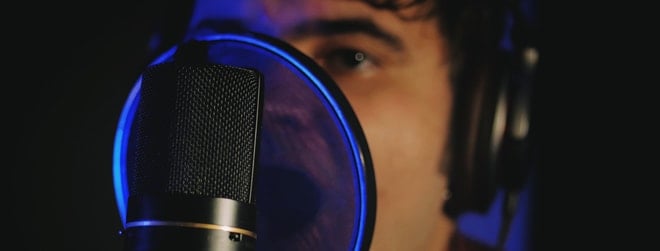

Voice over
Voice over, also referred as "UN style" is a production technique where a voice that is not a part of the narrative is added to the audiovisual material. We mean voice over when we can hear the voice of someone we can’t see. The script is recorded by a voice talent or a narrator who does not himself appear on-screen. This voice is generally narrative in nature – more of storytelling in the background or describing events and doesn't usually originate from a person on the screen. In the context of Localization, voice over is a localization method that adds a voice in addition to the on-screen dialogue or over the original dialogue, whenever there is any. Not to be confused with dubbing which is replacing the original dialogue of all on-screen characters with foreign language versions.
When to use voice over
Voice-over is commonly used in short form audio-visual materials of documentary and narrative nature where the translation is the main objective and there is little accent placed on the nuances of tone and emotions. The decision on using voice over however is based also on the local legislation and viewer preferences, nature of content, available budget, volume of content and turnaround time. Voice over is cheaper than dubbing and allows big content volume turnovers in shorter time periods. It does not require the viewers to have visual access to the screen in order to follow the action.
Broadcast voice over
Perhaps the best example of using voice over in broadcast media is Discovery Channel where voice over is used for nature documentary narration. Besides TV documentaries, voice over in broadcast media is widely used in TV shows, feature films, animations, promos and trailers, marketing videos, TV and radio commercials etc. In live-action content, studios use voice over to record the target language version in a louder volume over the original audio by lagging seconds behind the original audio track. Thus, viewers hear the original language and actor's voice on the background along with the translated, local language version, allowing them to precept and understand both simultaneously.
Non- broadcast voice over
Voice over is widely used for voicing non-broadcast audiovisual forms like video games, e-learning courses, GPS navigation, IVR/ messages on hold, audiobooks, podcasts, instructional and training videos etc. Voice over also works great for short-form content like footage from on-the-field, or conferences where voice-over is done by a live interpreter. In these cases, the focus is not on timing but matching the tone of the message intent and in most scenarios, this tone is being narrative.
In a wor(l)d...
GoPhrazy provides culturally sensitive voice over services in 150 + languages for the needs of your television, film, cartoon/ animation, commercial, e-learning, on hold, interactive or gaming content. From expert project consulting and assessment through talent casting from one of the largest pools of professional voice actors and a state-of-art audio production, you are in very good hands with us.































































